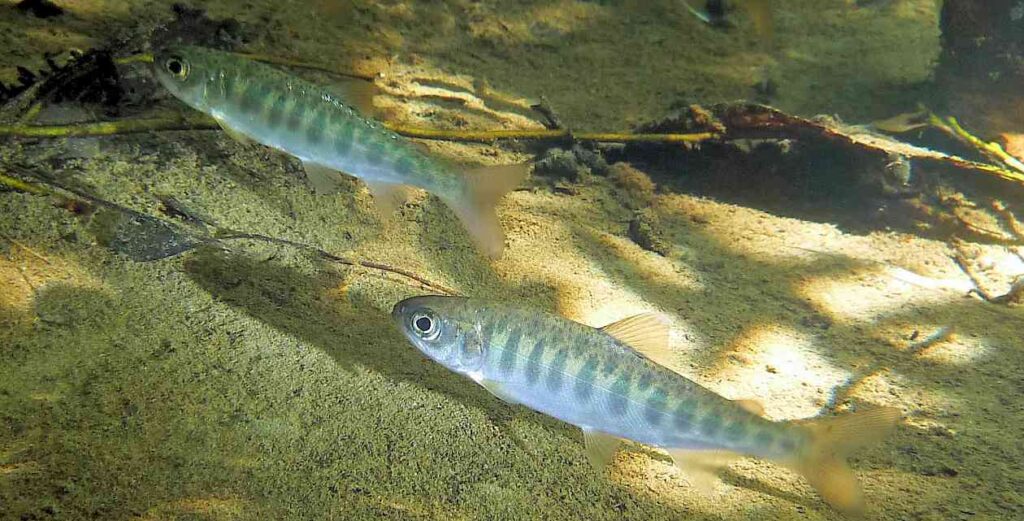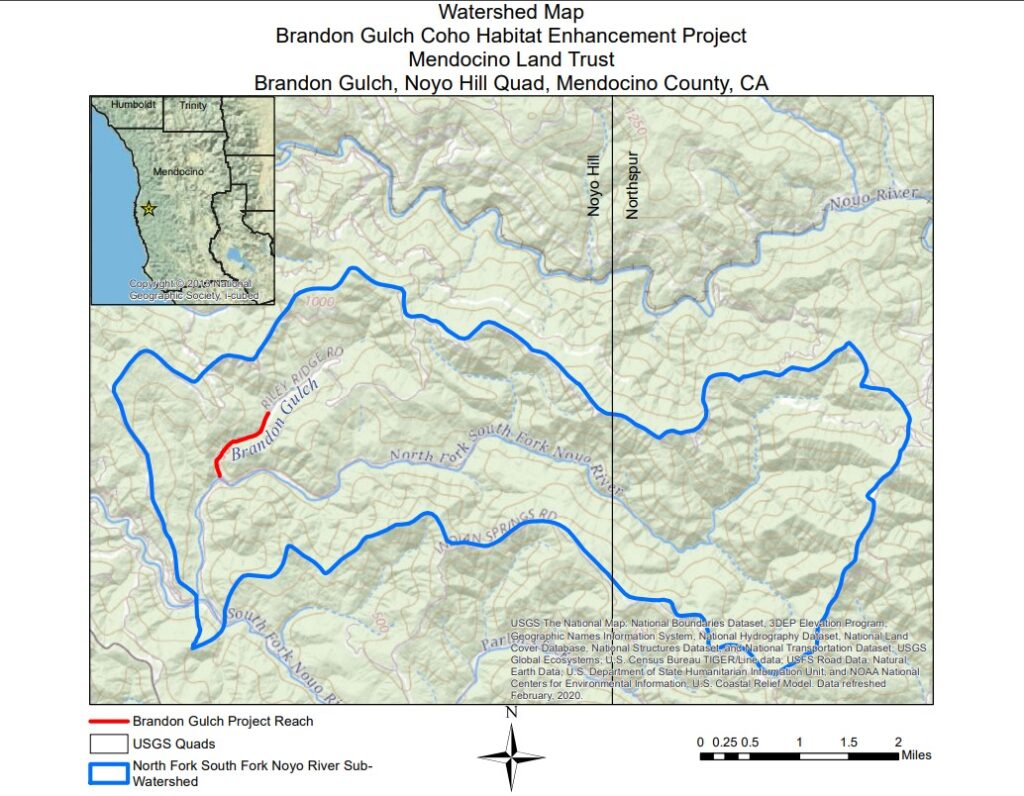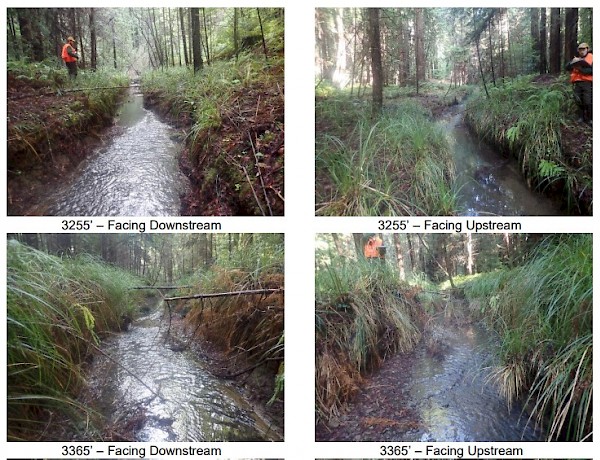News
Great News for Coho Salmon!
January 10, 2022

The Mendocino Land Trust has received a grant from the California Department of Fish and Wildlife to improve salmon habitat in Brandon Gulch.
Thanks to a strong partnership with the California Conservation Corps (CCC), the MLT combined efforts with the CCC’s fisheries specialists to design a salmon restoration project for Brandon Gulch. MLT has completed numerous salmon habitat enhancement projects, including in-stream habitat enhancement, dam removal and road decommissioning. Two additional funded projects (Bear Gulch and Chamberlain Creek) are in the planning stages.
Brandon Gulch stream is a tributary of the Noyo River. Water from this small stream enters into the North Fork Noyo River approximately 11 miles upstream from where the Noyo River empties into the Pacific Ocean in Fort Bragg. The redwood and Douglas fir forests in the Brandon Gulch area have been managed for timber production since 1862, to the detriment of the watershed’s health. One of the major issues is that the stream is lacking in the woody debris that provides ideal habitat for coho spawning (egg-laying) and hatchling salmon.

In 2010, a CDFW survey identified this area as a good candidate for a large woody debris (LWD) project. LWD projects assemble logs into structures that provide shelter for salmon and, over time, lead to deepening of pools further enhancing habitat. In 2015, CDFW conducted spawner surveys in this area. They found a coho redd (basically a fish “nest” where eggs had been deposited) and seven spawning adults. This was evidence that Brandon Gulch is desirable salmon habitat and reachable by fish seeking spawning locations. Snorkel surveys have shown the presence of young salmon in the nearby North Fork Noyo River.
“Salmon have made it clear they like this area,” says Nicolet Houtz, MLT’s Director of Stewardship. “Even though it’s a very small tributary, studies have shown that coho like to lay their eggs in these little streams that lead to bigger streams.”
As to the specifics of this project, 35 structures will be installed over 3,885 feet of Brandon Gulch to increase habitat complexity and improve pool frequency. These structures will consist of 100 pieces of wood and 10 sill/structural logs, added to 34 existing pieces of wood. Houtz explains “the installation of these structures will add complexity to pool habitats, provide cover and refugia and increase the frequency and depth of pools, as well as collect and sort spawning gravel.”

After these modifications are made, this stream will meet the “Very Good” target habitat rating for wood loading as outlined in the Southern Oregon/Northern California Coast Coho Salmon Recovery Plan (2014).
Houtz will begin planning for this project this year. There is a tall stack of permitting documents to complete and environmental studies to arrange.
Ground-breaking (stream breaking?) for this project is slated for July 2023. It is necessary to begin work after July 1 to avoid adversely affecting spawning Pacific lamprey. Most of the physical work is done by California Conservation Corps crews. The grant pays for their time, and the young people in the crew develop valuable skills and experience. Before applying for this grant, site visits were done to ensure there was enough existing downed wood on site to build the structures.
“It’s great that coho are still making it to Brandon Gulch, but their numbers are nowhere near historical levels,” Houtz adds. “By building on what’s already there we are able to improve instream habitat and salmon success.”